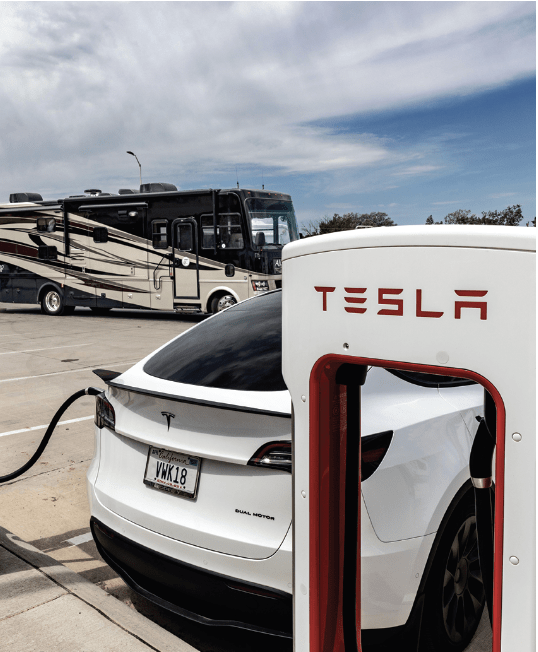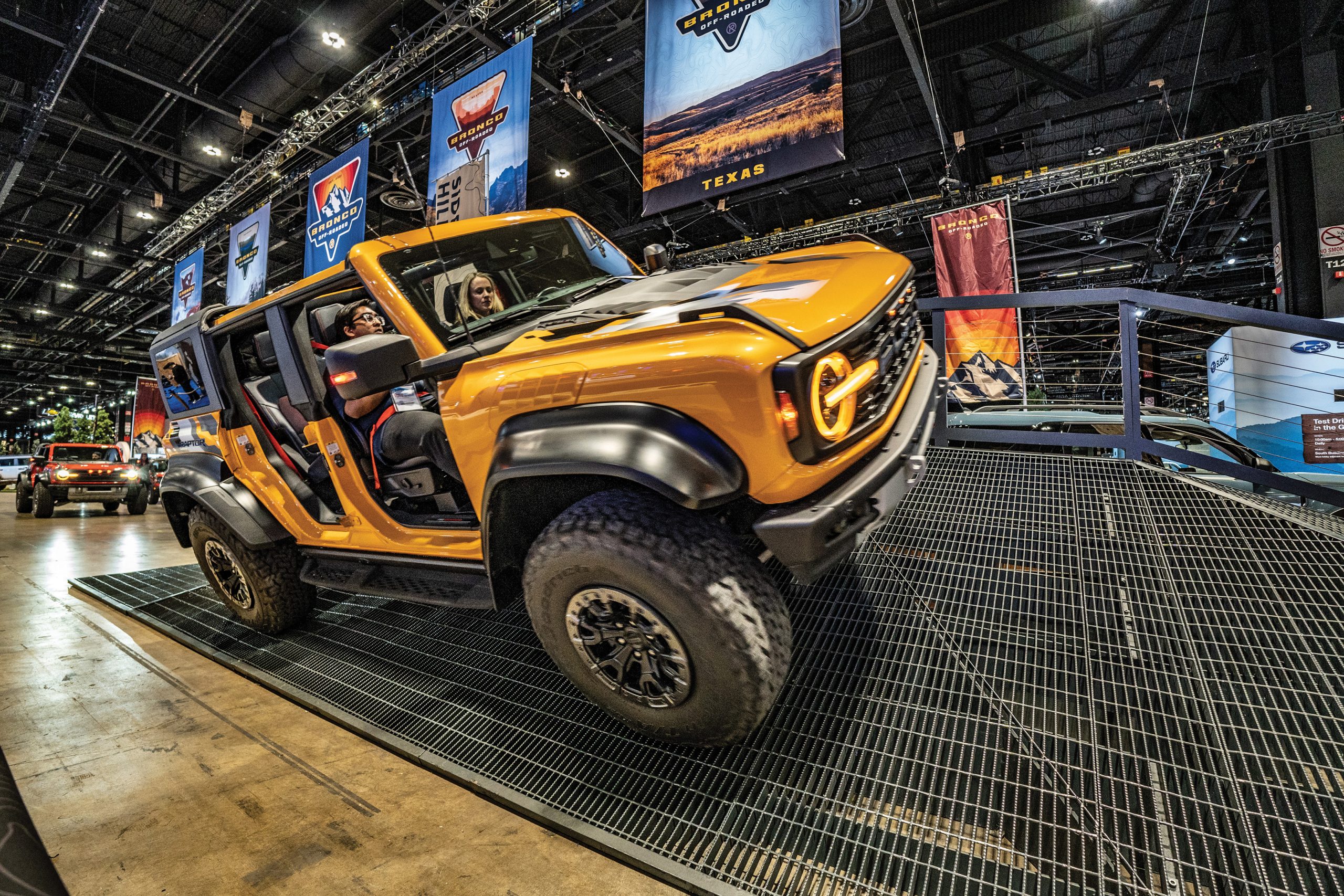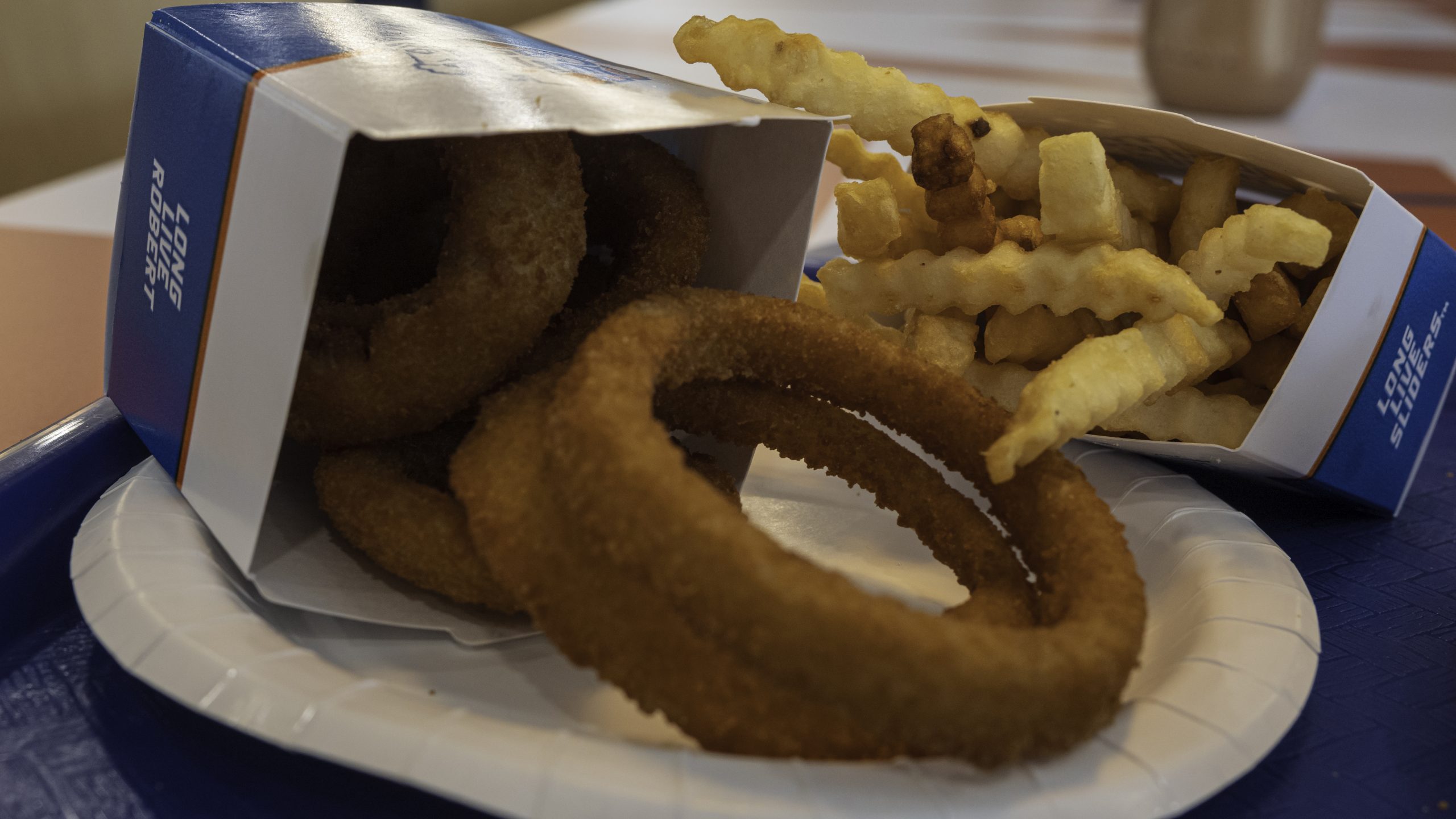It’s Not Easy Going Green
Copious torque and a clear environmental conscience can’t compensate for Tesla’s painfully high price, mediocre interior appointments and that uneasy feeling called range anxiety

“When this sucker hits 88 mph, you’re gonna see some serious shit.” While Emmett “Doc” Brown in the movie Back to the Future was talking about a souped-up DeLorean time machine, his prophetic comment could also apply to electric cars.
While this column has afforded me a multitude of opportunities, none has been greater than emailing my boss, Tom Sosnoff, and writing, “Hey, I need your Tesla for a few days, no questions asked.”
As gas prices climb higher than views on a viral TikTok video, web searches for electric vehicles reached an all-time high in March, according to Google Trends, a site that analyzes searches. But are electric cars delivering kilowatts of salvation, or are they niche toys for the rich?
As geopolitical risk, climate trends and the need to look like a character from Tron coalesce, EVs are caught in the brightest spotlight ever. What are their shining standout qualities, and what are EV proponents trying to keep hidden in the shadows?
Even before rising prices at the pump got a Russia-fueled boost, global consumers were already EV curious. Sales of EVs doubled across the world in 2021 compared with 2020.
“What we can say with certainty is that EVs mostly are selling as fast as automakers can make them,” Nick Nigro, founder of Atlas Public Policy, a firm that advises businesses on issues, said in a published report. “The signals from the market to the consumer, from high gas prices to volatility in the oil market, are only going to accelerate the interest in [the EV] transition.”
He goes on to explain that it’s hard to gauge the demand for EVs because of ongoing supply chain issues. Elements like lithium, cobalt and nickel—all key components of EV batteries—remain in short supply.
Searching the Tesla website shows an inventory of zero Model 3s available for immediate purchase within 200 miles of Chicago, and it indicates a five-month wait for delivery of the base model now listing for $48,490. A single Model S Plaid is available for Chicago delivery, but its list price is $155,990. Wow, I hope I still have energy to drive my new Tesla after I sell most of my vital organs.
All of the cost-saving arguments about EVs compared with ICE (internal combustion engines) seemingly go out the window when buyers have to pony up more than four times the annual median U.S. personal income of $35,997. The 2022 Nissan Leaf, the least-expensive point of entry to the U.S. EV market, lists for $27,400, or around $20,000 after the federal EV tax credit of $7,500.
By 2040, EVs will account for 58% of global passenger vehicle sales, according to Bloomberg New Energy Finance. Personally, I had never driven a purely electric vehicle until I borrowed a 2021 Tesla Model S. Getting acclimated to the Tesla takes a minute, but it’s not overwhelming.
The car doesn’t have many buttons. Inputs are handled via the car’s 17-inch touchscreen. A column-mounted lever shifts the car into park, drive, reverse or neutral. Like a grandmaster in a karate film, the Tesla senses when the driver approaches carrying the key FOB and the vehicle automatically pops out the door handles and folds out the side mirrors. There’s no on/off switch, which is a little unnerving when you’re walking away from the car for the first time.
Hands down, the single greatest attribute of electric cars is the freakish abundance of torque. Negotiating a highway on-ramp feels like qualifying for Talladega. Punchy power pushes you back into the seat and brings a grin to your face as you smoke a minivan off the line from a red light. Driving is fun again.
On my first day with the Tesla, all I did was commute to and from the office and then run some errands around Chicago. It was a “typical” day in the life of an EV owner. My work commute is less than 15 miles roundtrip.
EVs are great for stop-and-go traffic, but I got annoyed that every minor adjustment has to be made via the touchscreen. I can find the front defogger button in my car with my eyes closed, but it takes several swipes and taps on the Tesla touchscreen to locate that control. Good luck trying to get the sequence right when you’re driving.
Tesla uses 12 ultrasonic sensors to detect nearby cars, trucks and pedestrians, but the driver has to look at the colorized screen behind the wheel to determine if a vehicle is lurking in the blindspot. I much prefer the little orange light that just lights up in my side mirror when there’s a car in the blindspot.
To enable Tesla’s full self-driving mode, FSD, you’ll need to pony up an additional $12,000 to get auto parking, automatic lane change capability and “Smart Summon,” which enables the car to leave a parking space on its own and approach the driver. So, you’re now at $60,490 for a base Model 3 that can drive itself. That doesn’t include premium paint colors or aero wheels.
On the second day, I decided to go on a mini road trip across three states to see how readily available electric chargers were in rural Michigan and Indiana. Tesla’s navigation app has a “trip” feature that guides you along a route where Tesla chargers are supposedly available.
I made it all the way to New Buffalo, Michigan, which is 65 miles from my home, with about 175 miles left of the car’s 400-mile range. Worth noting: The stated range is not the actual range because it fluctuates according to factors such as how fast you drive and how hard you accelerate.
I found a free, 48-amp charger at a distillery, but its rate of replenishment was 36 miles for each hour on the machine, so it would take more than six hours to charge back to full! I let it charge for 45 minutes while I took photos and got back on the road with just under 200 miles of range remaining.
Hitting the highway for the trip home definitely used more juice than the backroads I traveled to meander to Michigan. I arrived home with about 90 miles of range still available.
I searched Tesla’s navigation app for superchargers and discovered there weren’t any on the South Side of Chicago. I found a supercharger on the fifth floor of a parking garage in the South Loop, and this one charged at 70kW, or about 278 mph of replenishment. Even at that level, it took more than an hour to recharge.
For some reason, I believed electric cars could charge in 20 minutes, about the time it takes to stop for gas, use the restroom and get some snacks. But that’s not the case.
I didn’t use a single drop of gas in three days, but I made concessions to go that green. The Model S is small, and visibility from inside of the car isn’t great. On the highway, I was concerned that drivers in SUVs and trucks might not see the little car. Unlike most vehicles, Teslas don’t make noise, which means no one can hear them coming.
Also, range anxiety is real. Just because Tesla says there’s a charger a few miles away doesn’t mean that it’s not broken or in use by another motorist. Besides, you may not have quite the range you were expecting. Also worth noting, electric cars don’t work as well when temperatures drop in winter.
Plus, the excitement of instant torque dulls when you realize you spent more than $100,000 for a car with interior finishes that quite frankly aren’t that impressive. In early 2018, engineering consultant Sandy Munro, who tears apart and reverse-engineers cars to assess quality, issued a brutal appraisal of the Model 3, citing “flaws that we would see on a Kia in the ’90s.” Even Musk agreed.
Is the Tesla one of the coolest cars I’ve ever driven? Sure. Is it the nicest? Nope. Tesla reigns as the dominant player in EVs in the United States, but there’s room for competitors to come in and steal the crown.
Issues that include cost, availability and feasibility still put EVs out of reach for most American consumers. They’re definitely sexy and flashy with their Super Bowl ads and celebrity adherents, but most people can get by with green alternatives like riding bicycles and taking public transportation.
We have to reduce dependency on fossil fuels or else agree to burn this planet to ashes and start over again on Mars. We need more ways to go green, but they shouldn’t cost all the green you have.
Vonetta Logan, a writer and comedian, appears daily on the tastytrade network and hosts the Connect the Dots podcast. @vonettalogan



















